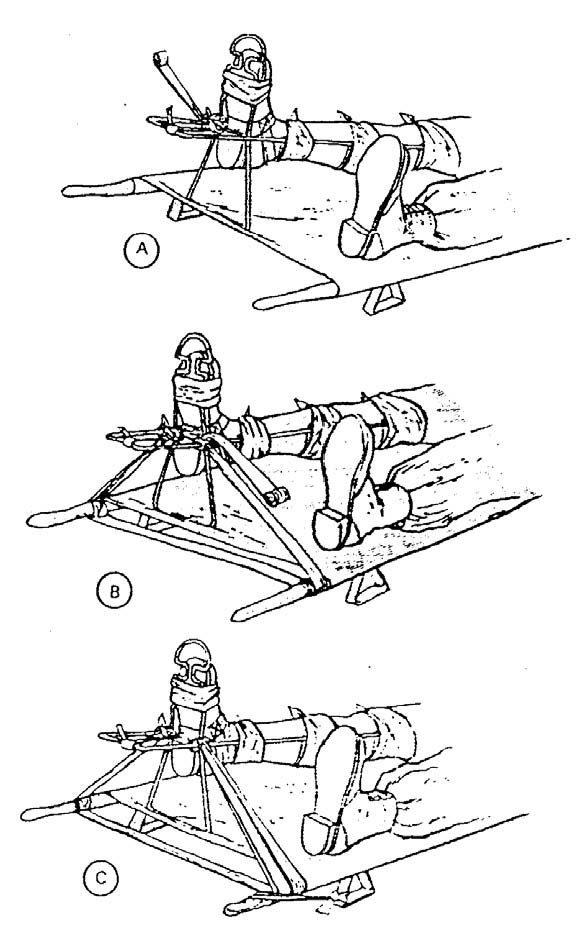Treating Fractures in the Field
Lesson 3: Traction Splints
3-5
3-5. SECURE THE SPLINT SUPPORT TO THE LITTER USING A ROLLER BANDAGE
If you do not have a litter bar, the splint support (stirrup) can be secured to the litter using a roller bandage or similar material.
a. Place the casualty onto the litter so the splint support is on the canvas bed of the litter.
b. Secure the end of the roller bandage to the outside of the splint support where the splint support meets the outer rod of the splint. (See figure 3-6 A).
c. Bring the roller bandage down over the near litter pole and encircle the pole close to the canvas bed with two turns of the bandage.
Figure 3-6. Securing a traction splint to the litter using a roller bandage.
d. Bring the roller bandage under the litter to the far litter pole.
e. Encircle the pole close to the canvas bed with two turns.
f. Carry the roller bandage to the inside rod of the splint where it joins the litter support.
g. Wrap the bandage around the site where the splint support meets the inner rod of the splint with two turns. (See figure 3-6 B).
h. Carry the bandage back around in the reverse direction (two turns around the far litter pole, under the litter, and two turns around the near litter pole).
i. Secure the roller bandage to the place where the splint support meets the outside splint rod (the location where you began) so the bandage will not come undone; then cut the bandage (see figure 3-6 C).


